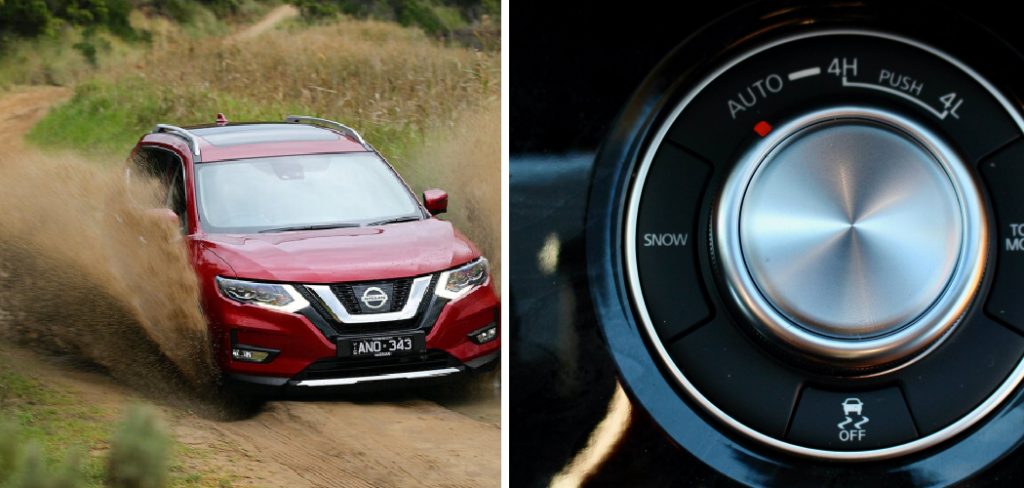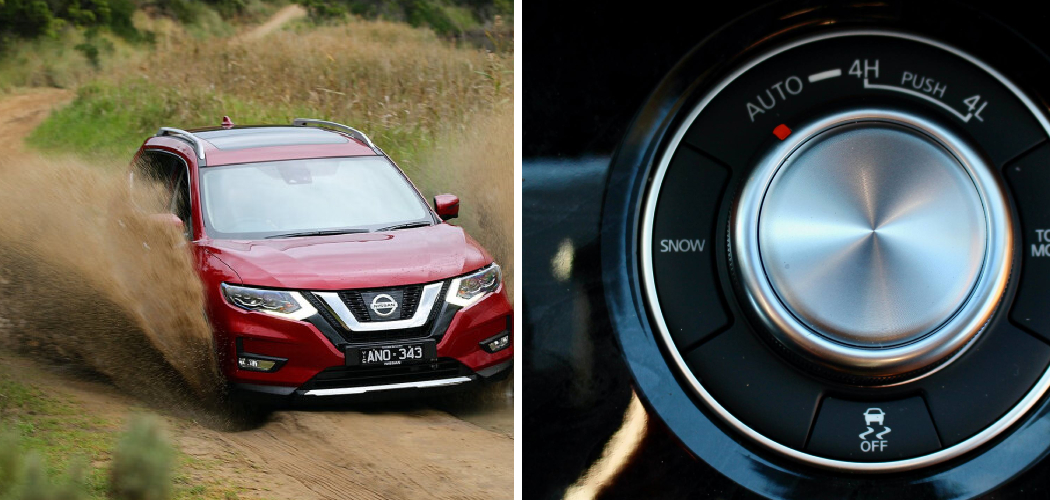Four-wheel drive is an invaluable feature in any vehicle that ventures off-road or tackles tough terrains, but sometimes, you need to turn it off for certain situations. Knowing how to turn off four wheel drive is crucial in ensuring the longevity of your vehicle’s drivetrain and saving you fuel costs.

Whether you’re a seasoned off-roader or you just bought a four-wheel drive car and are curious, this comprehensive guide will provide you with everything you need to know about turning off four-wheel drive.
Can You Turn Off Four Wheel Drive?
Driving on rugged terrain or through harsh weather conditions can be challenging. That’s why owning a vehicle with 4-wheel drive capability can make all the difference. It provides better traction and stability, giving you greater control over your vehicle. But what if you don’t need it? Can you turn off 4-wheel drive?
The answer is yes, and it’s a simple process. Depending on your vehicle, you can usually disengage 4-wheel drive with the push of a button or the flip of a switch. This allows you to switch to 2-wheel drive when driving on smoother roads or on a sunny day. By turning off 4-wheel drive, you’ll save on fuel consumption and reduce wear and tear on your vehicle. So, the next time you’re wondering if you can turn off 4-wheel drive, rest assured.
Why Should You Turn Off Four Wheel Drive?

Four wheel drive is a great feature that many vehicles are equipped with. It allows you to conquer tough terrain like mud, snow, and sand with ease. However, you shouldn’t forget to turn it off when the conditions don’t call for it. Leaving it on when it’s not needed can actually cause damage to your vehicle. It can put unnecessary strain on your drivetrain, tires, and suspension.
Turning off four wheel drive not only protects your vehicle, but it can also save you money on repairs in the long run. Don’t forget to check your owner’s manual for instructions on properly switching between driving modes and always use good judgement when deciding which mode to use.
How to Turn Off Four Wheel Drive: A Comprehensive Guide
Step 1: Bring Your Vehicle to A Complete Stop.
Before shifting the gear selector, it’s crucial to come to a complete stop. Engaging or disengaging four-wheel drive while moving can cause serious damage to your vehicle’s transmission and drivetrain. Once you’ve parked, shift the gear lever to “neutral” and engage the parking brake. You can also put the vehicle in “park” if you have an automatic transmission.
Step 2: Choose Your Four-Wheel Drive Option.
Depending on the vehicle, there are several ways to engage four-wheel drive, and they might have different names depending on the automaker. For example, on many SUVs and trucks, there’s a lever next to the gear selector that controls the four-wheel drive. It’s labeled with different positions like 2H, 4H, 4L, and N. Some vehicles have a button or knob on the center console that controls the four-wheel system.
Step 3: Shift the Transfer Case Into Two-Wheel Drive.
Depending on the type of vehicle, this can be different, but generally, the transfer case is usually situated on the floor between the front seats. Set the transfer case to the position designated for two-wheel drive. It may be called “2H,” “2 wheels,” or “rear-wheel drive only.” Many modern cars have an electronic switch for the transfer case.
Step 4: Drive Your Vehicle in Two-Wheel Drive Mode.

Once you shift the transfer case into two-wheel drive mode, you can now drive your vehicle on two wheels. Two-wheel drive is more fuel-efficient than four-wheel drive, so it’s recommended for highway driving or other situations where you don’t need extra traction.
Step 5: Disengage the Four-Wheel Drive System.
Now that you’ve successfully driven your automobile in two-wheel drive, it’s time to disengage the four-wheel drive system completely. This step will vary based on how your vehicle’s four-wheel drive system was turned off. For example, in some vehicles, you need to push a button to turn off the system, while in others, you need to shift the transfer case back to “2H.” Consult your owner’s manual for specific instructions.
Step 6: Shift the Gear Selector to “Drive” or “Reverse.”
Once you’ve disengaged the four-wheel drive system, put your vehicle back into gear by shifting the gear selector to either “Drive” or “Reverse.” This will allow you to move again in two-wheel drive mode. Make sure that you’re in a safe location and that there are no obstacles in front of or behind your vehicle before proceeding.
Step 7: Double-check That the Four-Wheel Drive Is Off.
It’s always a good idea to double-check that you’ve turned off the four-wheel drive system before driving. Look for any dashboard lights or indicators indicating the system is still engaged. If you see any, refer to your owner’s manual for further steps to properly disengage the four-wheel drive system.
5 Considerations Things When You Need to Turn Off Four Wheel Drive
1. Road Conditions
One of the main considerations when turning off four-wheel drive is the road conditions. Four-wheel drive is typically used for off-road or slippery conditions, and if you are driving on a well-maintained road, it may not be necessary to have it engaged. Turning off four-wheel drive can improve fuel efficiency and reduce wear and tear on your vehicle.
2. Speed

Another important factor to consider when turning off four-wheel drive is your speed. Four-wheel drive should only be used at low speeds, typically under 45 miles per hour. Engaging four-wheel drive at high speeds can cause damage to your vehicle’s drivetrain and decrease control of your vehicle.
3. Terrain
The type of terrain you are driving on is also crucial in determining whether or not to turn off four-wheel drive. If you are driving on a flat, paved surface, there is no need for four-wheel drive as it may actually hinder your vehicle’s performance. However, engaging four-wheel drive may be necessary for better traction and control if you are driving on uneven or slippery terrain, such as mud or snow.
4. Fuel Efficiency
Turning off four-wheel drive can also improve fuel efficiency in your vehicle. When four-wheel drive is engaged, power is distributed to all wheels, which can use more fuel than in two-wheel drive mode, where power is only sent to two wheels. If you are driving on smooth roads with no need for additional traction or control, turning off four-wheel drive can save you money on gas.
5. Wear and Tear
Lastly, turning off four-wheel drive can help reduce wear and tear on your vehicle’s drivetrain components. When engaging four-wheel drive, additional stress is placed on these components, which can lead to premature wear and potentially costly repairs down the line. By only using four-wheel drive when necessary, you can help prolong the life of your vehicle’s drivetrain system.
Benefits of Turn Off Four Wheel Drive
There are a number of reasons why turning off your four wheel drive can be beneficial in certain situations. One of the biggest advantages is improved fuel efficiency, as you’re reducing the load on your engine and allowing it to work more efficiently. Additionally, turning off four wheel drive can improve your vehicle’s handling and can even help prevent wear and tear on your tires and suspension system.

Another benefit to turning off four wheel drive is greater ease of driving on pavement or other smooth surfaces, since the added traction and stability of 4WD may actually impede your ability to turn and brake effectively. Whether you’re cruising around town or heading out on an off-road adventure, it’s important to consider the benefits of turning off your four wheel drive when it’s not necessary.
Some Common Mistakes People Make When Trying to Turn Off Four Wheel Drive
Four wheel drive is a great tool for driving on challenging terrain and low-traction surfaces, but it’s important to know how to properly turn it off when you no longer need it. One common mistake people make is trying to switch from four wheel drive to two wheel drive while the vehicle is still in motion. This can cause damage to the drivetrain and potentially lead to expensive repairs down the road.
Another mistake is forgetting to disengage the locking hubs or electronically engaged transfer case before returning to regular driving conditions, which can cause unnecessary wear and tear on your vehicle. It’s always important to refer to your owner’s manual or consult with a professional to make sure you’re utilizing and disengaging four wheel drive correctly to keep your vehicle in top condition.
Conclusion
In summary, turning off four-wheel drive is an essential skill to have if you own a vehicle with this feature. By following the easy steps outlined above, you can make sure that you do this crucial process safely and accurately.
Remember, it’s always better to turn off the feature when you don’t need it so you can save gas and ultimately ensure your vehicle lasts as long as possible. So, next time you don’t need all-wheel or four-wheel drive, you can follow the steps above and turn off your vehicle’s four-wheel drive with confidence. Thanks for reading our post about how to turn off four wheel drive.

